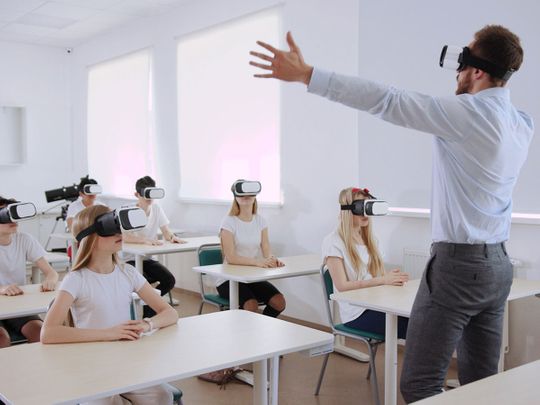
The pandemic served to highlight the enormous potential of new technologies within the education sector. However, future success of their utilization relies heavily on the sector’s ability to evolve in line with new demands. Schools and universities need to have a thorough understanding of the industries that are driving economies in the digital age.
Nations that are keen to become a knowledge-based economies are investing to produce students who can manage and evaluate information and data. They want to know how creatively they can use what they know, and whether they can extrapolate from it and apply their knowledge in another context. Students must be able to apply, extend, and expand on their knowledge and develop transversal skills that enable them to thrive in a complex world.
Skills such as critical thinking, creativity, problem solving, and collaboration are at an increasing premium. To exhibit these, firstly, we need to think more creatively and innovate to bring about alternative - and more appropriate - solutions to the educational needs. Secondly, it is essential to be bold to develop holistic models of learning and designs that are more suitable. If that means we need to challenge our own assumptions, so be it.
Lastly, it is critical for educators to bring about transformation by being involved with development of policies or services that impact us, and most importantly, the younger generation we serve.
Think different
Students will need to be ‘globally competent’ to understand other cultures and be comfortable with cultural complexities. Schools are facing more pressure than ever to produce graduates who are not just educated, but capable of forging cross-cultural relationships and working across borders.
To truly prepare students for their careers, educators must understand a changing landscape. It involves recognizing what future jobs are likely to demand. However, it does not mean abandoning the systems and approaches that have served our collective advancement to date.
One of the advantages of globalism is that it enables us to implement tried and tested practices whilst respecting the nuances of the individual market and its unique skill requirements. We must empower students to succeed in and create a world we can’t anticipate. We do that by creating different pathways for student success, equipping and empowering students to become self-generated, student-driven learners.
We drive equal access to technology and high-speed communications for every student around the world. We use technology to help teachers provide personalized, differentiated instruction so each child can succeed.
Tech is an imperative
It is evident that digital is driving the emergence of new ecosystems for learning and knowledge creation — and setting the stage for immense innovation. In a world of work-from-anywhere, people also want to ‘learn from anywhere’. New education platforms are rising to meet this demand. Extending a school-based technology program outside the school walls is a powerful way to have more impact on equity and educational improvement. It is outside the classroom where the deep inequities are rooted, and where the real opportunity in terms of equity and educational improvement is to be had.
The key is to bring technology into the picture in ways that translate into good teaching and learning. This requires sophisticated public policy, a long-term commitment, and a systematic approach.
Changing attitudes toward digital and emerging technologies present new opportunities for education institutes to reinvent learning delivery. Educators must adapt their methods accordingly.













